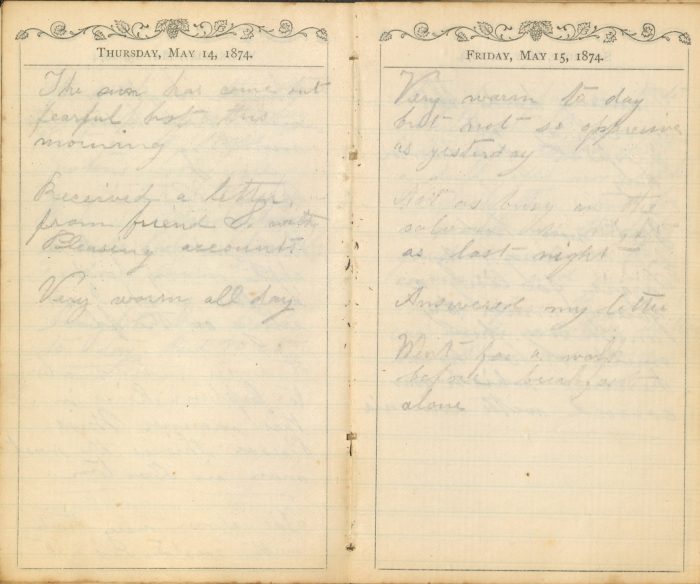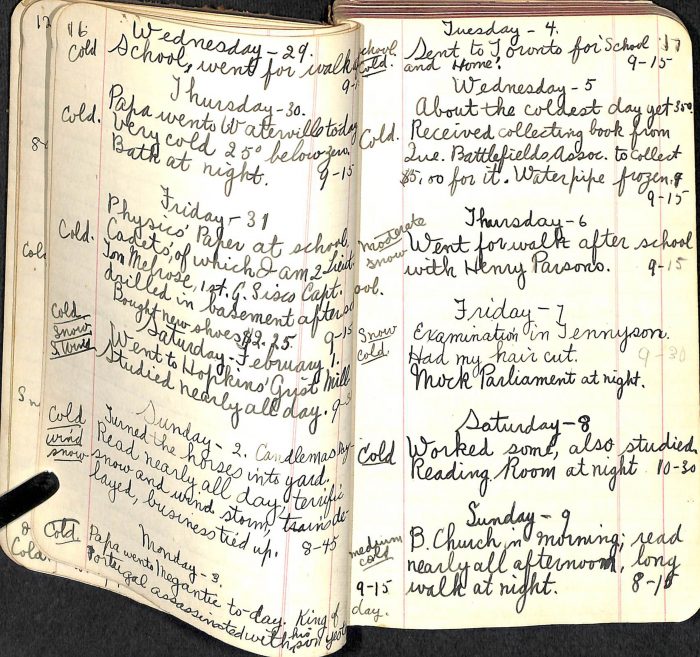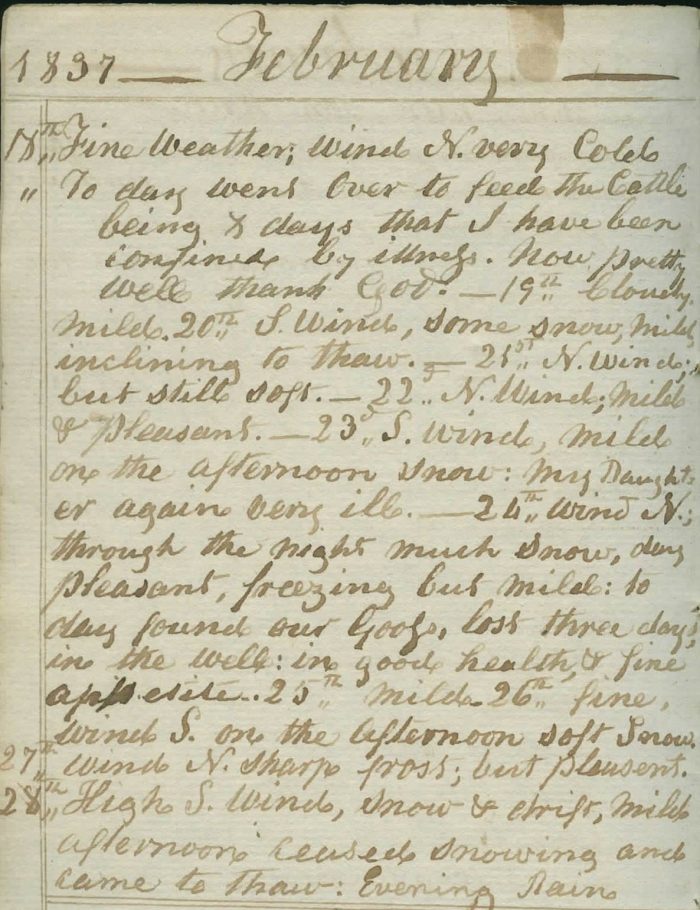

Partager
Weather of Years Past
4 mars , 2024
By Jazmine Aldrich
The spring-like February weather that the Townships region has been experiencing this year raises alarm bells regarding our changing climate – but how do we know that the climate has really changed? In order to observe a change, climate scientists must benchmark change indicators over time and demonstrate patterns. Fortunately, many diarists had thoughts of posterity when they recorded near-daily weather observations. While these observations may not always be precise measurements, they provide us with enough information to plot changing weather patterns over time.
The ETRC Archives contains many such weather observations. One of our oldest sources on the local climate is a set of three diaries dating from 1836 to 1839. The diaries originate from Lacolle and were kept by an unidentified farmer. Nearly every day, the farmer records details such as the wind direction and strength, precipitation, clouds, and relative temperature.
Susanna Pearson’s 1874 diary focuses on her day-to-day activities, but also includes recipes, poetry, and details about the weather. She was born in the state of New York and her family moved to Shefford County early in her life. Susanna was 22 years old when she kept her diary, much of which was written during her time living and working in Boston. While Susanna’s diary is not a direct source on the weather in the Eastern Townships, it does provide near-daily observations of the weather in Boston, which can serve to compare and contrast other contemporary weather sources. For example, she notes on May 14, 1874: “The sun has come out fearful hot this morning,” and, the following day, “Very warm to day but not as oppressive as yesterday.”
Archie N. Jenks of Coaticook kept a diary from 1907 to 1911, from the ages of about 18 to 22. The diary spans Jenks’ time as a student at Coaticook Academy and later, at McMaster University in Toronto. Much of his diary recounts his time spent studying and reading, but Archie still peppers in references to the weather and its impact on his life; for example, he writes on New Years’ Eve of 1907: “If it does not snow I am going skating on the rink to-night.” On February 2, 1908, he notes the “[…] terrific snow and wind storm, trains delayed, business tied up” and, on the 5th of the same month, “Water pipe frozen.” Archie even makes weather comparisons within his diary, observing that on May 29, 1907, it was “snowing a little” whereas on May 22, 1911, it was 95 degrees Fahrenheit in the shade. We can use these diaries to compare February weather over a 71-year period. The farmer observes that February of 1837 was generally quite mild, with some snow (peaking on February 24), then returning to mild weather and even some rain towards the end of the month. On the other hand, Archie Jenks’ recollections of February 1908 are that it was generally cold, with moderate temperatures and a thaw towards the middle of the month, and moderate to cold temperatures towards the end of the month. While Susanna Pearson’s observations were not local, nor were they taken in February, hers capture a summer’s worth of the east coast climate in 1874. Each of these diarists were impacted to varying degrees by the changing weather, and each diary tells its own story of our climate’s past.

Crédit photo: : P185 Douglas-Bridgette family fonds
Pages from Susanna Pearson’s diary for May 14-15, 1874.

Crédit photo: : P206 Jenks family (Coaticook) fonds
Entries from Archie Jenks’ diary dating from January 29, 1908 to February 9, 1908. The diarist records details such as the temperature and the weather, as well as his daily activities.
